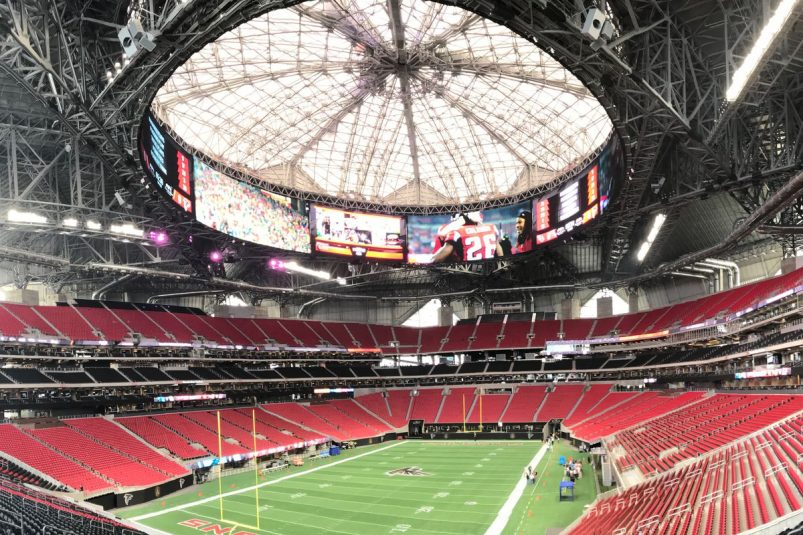Mercedes-Benz Stadium Gets High-Tech Sound With a Mixed Infrastructure
The venue is basically fiber-based, but copper still has its place — particularly for audio
Story Highlights
Stadium technology design has been ostensibly focused on getting fans out of the house and back in the stands, but the newly opened Mercedes-Benz Stadium, home of the NFL Atlanta Falcons and the MLS Atlanta United, might make them want to move in and stay. The massive Halo video display and scoreboard is as ubiquitous to each seat as the living-room television is to the couch, and, like the home television, it’s rarely turned off: commercials and other announcements fill in almost every moment that it’s not being used to convey game information. The audio, however, is not what you’d find in the typical home.
Danley Labs designed and installed a system that rings the upper levels of the stadium with 36 main speakers, distributed in eight cluster positions, each consisting of a Jericho 1 box on top of a Jericho 2 box with a pair of BC814 subwoofers on one side of each assembly. These are powered by Crown MacroTech HD amplifiers. According to Danley Labs CEO Mike Hedden, the system achieves close to a 0.7 Speech Transmission Index for Public Address (STIPA) value, with 1.0 a nearly unachievable perfect and 0.5 the baseline in the stadium’s bid specifications.
That did not come at the expense of low-frequency energy, however. During system tests with the roof closed, puddles formed on the concrete floor from rain coming through breaks in the movable roof-cover pieces. With the subs engaged and reaching down to 26 Hz, the puddled water reflected the bass impulses like a reverse transducer. “It looked like the dinosaur-footstep scene out of Jurassic Park,” laughs Hedden.
For broadcast connectivity, 52 JBT (junction box television) boxes home-run a combination of fiber and copper cabling from field-level and other camera positions, and two television sets, to the main broadcast interface in the venue’s loading-dock area. The venue is heavily cabled, notes Andy Berry, director of projects and field operations for Bexel, which did the stadium’s broadcast-cabling infrastructure. However, a substantial amount of copper also is installed, with DT-12 breakout connections scattered liberally throughout the venue.
“It’s very much a fiber-optical venue, but we have a comparable amount of copper in there,” Bexel SVP Scott Nardelli explains. “Copper for audio offers a lot of simplicity and reliability. An HD camera requires 1.5 GHz on fiber to go across the venue, but audio does just fine over long distances on copper, with XLR and DT-12 breakouts along the way. Fiber has been the future for the last 10 years, but copper is still going to be part of the infrastructure mix for a long time to come.”

